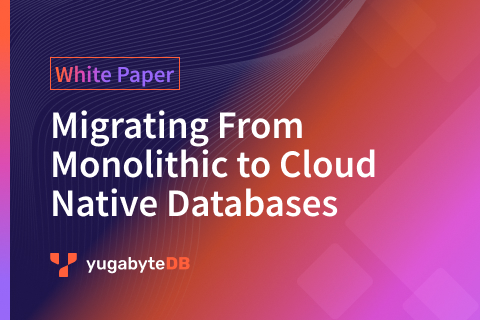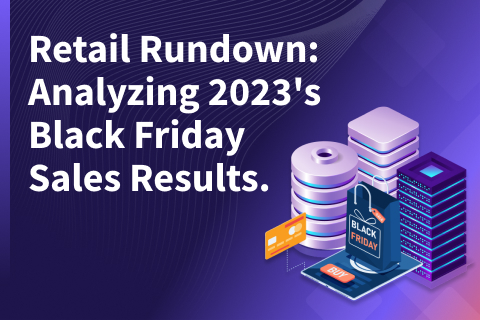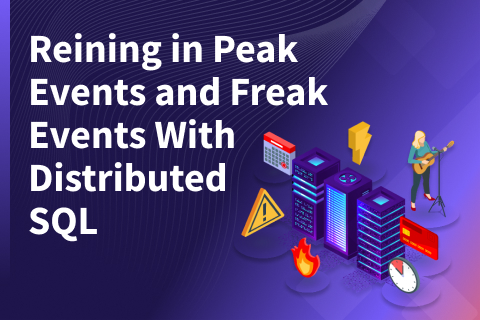Discover the Final Way to Cut Cloud Costs in 2024
Remember when they told you that you needed this shiny new thing called “cloud?” That it was silly to pay for more computing resources than you needed most of the time, just because it was required to cope with traffic and demand peaks (like Christmas) a couple of times a year?
In fairness, this was true—the cloud is perfect for scaling up and scaling down, and it was (and is) a better way to even out your computing resourcing.
But, they didn’t tell you that this was only one sort of scaling—scaling the application up and down to serve varying demands. If you want more people connecting to your service, doing more transactions, and creating more data, you need a bigger database at the back end.
‘Scale’ doesn’t necessarily mean petabytes of data; very few CIOs have applications requiring that much data at run time. What we’re talking about is the number of concurrent active users rather than storage.
If hundreds of thousands of people connect at the same time, you need a database capable of managing that. It’s a processing issue, not a storage one.
Ten years ago—and often still now, to be honest—we worked around this by buying lots of little application servers to run those connections. But, to make the magic happen, they all connected back to one big Oracle or DB2-style box somewhere in a data center. Back then, that Oracle database was bigger than it needed to be because of Black Friday or Singles Day in China. And it still is.
In other words, the problem we thought we’d cracked didn’t go away. Monolithic databases are still getting cobbled together to make cloud business work. Why? Because these engines were just not built for the cloud and the unique way it works with data. You have kept paying for proprietary software, running on specialist hardware.
Scale Your Database Capability Up and Down as You Scale Your Applications
This setup is limiting the positive impact of the cloud on your overall budget. It’s a cost you keep having to carry, and it also means you’re not exploiting all the capabilities and innovative features the cloud offers.
Cloud has been fantastic for one part of the scaling challenge, application scaling, but it’s really only possible by using as big a single database as you can power up.
The uncomfortable truth about using the cloud to scale a business process is that you’ve always had to use traditional, monolithic SQL databases to make it fulfill that promise of smoothing out your IT peak events and troughs. This was pricey enough before; now it’s getting out of hand.
 Unlock the full potential of cloud migration with our ebook. Discover how YugabyteDB simplifies database migration for modern, microservices-based applications. It’s monolithic to modern in just a few strategic steps.
Unlock the full potential of cloud migration with our ebook. Discover how YugabyteDB simplifies database migration for modern, microservices-based applications. It’s monolithic to modern in just a few strategic steps.How can you solve this challenge and save? One option is to adopt a cloud native database which allows you to scale your database capability up and down in the same way you scale your applications. Instead of a single, giant machine and expensive proprietary licenses, you could have three smaller ones, perhaps in different geographies. Then, if one suffers an outage, you fail over to the other two and stay up and running without any business (or customer) impact. It’s also cheaper. Running a big transactional app in the cloud might require renting a 32, 48, or even 64-core server… but, two 8-core virtual machines are cheaper than renting a 16-core machine, etc.
In fact, even if you don’t need to scale up immediately, it quickly becomes cheaper to have a number of small machines cooperating to carry your workload, rather than one big machine.
Why Isn’t This The Norm, Though?
This isn’t the norm, because we left the cloud revolution unfinished. We have done so much – moving capital expenditure into operating expense, lifting and shifting workloads (then finally redesigning and optimizing them). Today, the application layer of most organizations is much healthier than it was, as we rapidly moved from virtual machines to Docker containers and now, in many instances, Kubernetes pods. All this has made building applications and distributing them resiliently around the world more straightforward and cost-effective.
However, database evolution has lagged behind and is the final step we need to take to complete the cloud revolution. It’s a step we might call enabling, not vertical, but horizontal scaling.
Transactional Consistency and the Ability to Horizontally Scale Out
A good example of horizontal scalability is a major global retailer we worked with. Though a very successful bricks ‘brick-and-mortar brand name, the company was moving aggressively into the eCommerce space even before Covid accelerated the importance of a strong online store. It was doing all the right things with microservices and modern application development techniques and technologies, but the database side posed a problem.
Even the biggest database they could build, on the biggest virtual machine they could rent in the cloud, could not handle their load.
To work around this, its engineers had to do messy fixes like sharding, which started to get complicated and raised the specter of transactional inconsistency. This meant that one shopper might ask for something that the system had just placed in another customer’s shopping basket elsewhere.
It got very messy. Their solution was to adopt a cloud native database that gave them both transactional consistency and the ability to scale out horizontally. And it worked! The company now benefits from sub-10 millisecond performance, boosted operational simplicity and efficiency, and, crucially, can now easily meet massive eCommerce peaks. And they have seen some massive eCommerce peaks!
To complete the cloud revolution and achieve the horizontal scaling that you want, it’s worth considering distributing your business data and sharing the load among lots of machines rather than pouring all your money and hopes into one database leviathan. The answer is a scalable, resilient, turbocharged PostgreSQL database (like YugabyteDB).
This kind of technology is available now and easy to install. It allows you to finally achieve the time and cost savings promised by the cloud all those years ago.
NOTE: This article first appeared on CompareTheCloud.net on November 27, 2023.
Additional Resources
- Top Global Retailer Modernizes their Online Shopping Experience (Customer Story)
- YugyabteDB is the Retailers’ Choice for a Modern Transactional Database (Solution Brief)
- Why eCommerce Websites Crash (Blog)


